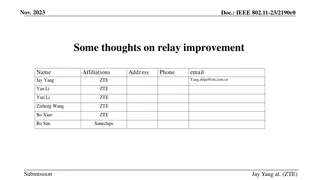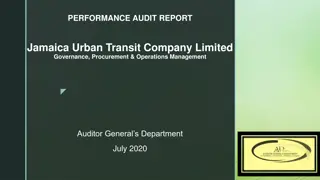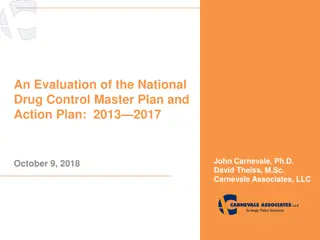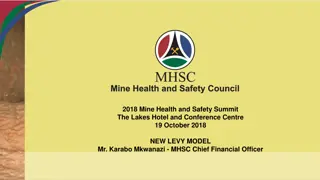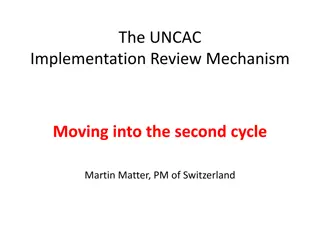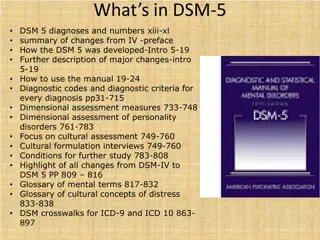
Challenges in Marine Recreational Fisheries Economic Data
Explore the limitations in the current body of marine recreational fisheries economic data and the challenges faced in filling information gaps. Issues such as California salmon and water allocations are discussed, emphasizing the need for accurate economic information to inform regulatory processes effectively.
Download Presentation

Please find below an Image/Link to download the presentation.
The content on the website is provided AS IS for your information and personal use only. It may not be sold, licensed, or shared on other websites without obtaining consent from the author. If you encounter any issues during the download, it is possible that the publisher has removed the file from their server.
You are allowed to download the files provided on this website for personal or commercial use, subject to the condition that they are used lawfully. All files are the property of their respective owners.
The content on the website is provided AS IS for your information and personal use only. It may not be sold, licensed, or shared on other websites without obtaining consent from the author.
E N D
Presentation Transcript
Shortcomings in the Current Body of Marine Recreational Fisheries Economic Data Mike Leonard: Ocean Resource Policy Director, American Sportfishing Association Rob Southwick: President, Southwick Associates
Introduction Past management issues have suffered from limited or missing economic data elements. Desired Goals: 1. Discuss challenges to filling these information gaps 2. Begin to prioritize information gaps Examples of recent and ongoing issues are next.
Recent Issue: California salmon / Water allocations Key Information Gaps: Marginal changes in participation & spending resulting from changes in: Fish stocks: we do not know the potential impacts from restoring stocks
Recent Issue: California salmon / Water allocations Key Information Gaps: Marginal changes in participation & spending resulting from changes in: Fish stocks: striped bass Regulatory changes: reef fish, South Atlantic snapper Access (California, Biscayne National Park) In California, we heard (without statistical support): Anglers would simply shift 100% of effort & $$ elsewhere Anglers will not shift to other recreations, will not reduce expenditures or take their dollars outside the economic area.
Ongoing Issue: Weighing Economic Impacts in Regulatory Process Key Information Gaps: Lack of local and fishery-specific economic information Lack of procedures for how to apply such information
Ongoing Issue: Weighing Economic Impacts in Regulatory Process Requirements within MSA: National Standard 8: Conservation and management measures shall take into account the importance of fishery resources to fishing communities by utilizing economic and social data and to the extent practicable, minimize adverse economic impactson such communities. Sec. 303. Contents of Fishery Management Plans: specify the pertinent data including economic information necessary to meet the requirements of this Act assess, specify, and analyze the likely effects, if any, including the cumulative conservation, economic, and social impacts, of the conservation and management measures on participants in the fishery include a description of the commercial, recreational, and charter fishing sectors which participate in the fishery, including its economic impact
Ongoing Issue: Weighing Economic Impacts in Regulatory Process Example: South Atlantic Red Snapper In 2009, NMFS proposed 5,000 sq mi bottom-fishing closure cost and revenue data for even the most directly affected businesses, such as fish dealers and bait and tackle shops, is unavailable 1 ASA and Big Rock Sports commissioned a survey of Southeast tackle dealers:2 1,300 stores selling bait and tackle will be directly affected $78 million in sales would be lost in the first year of the ban 578 jobs will be affected 150 CFR Part 622 2Georgetown Economic Services. 2010. An Economic Impact Study of the Effects of Closures in the South Atlantic Snapper-Grouper Fishery on the Bait and Tackle Retail Industry
Ongoing Issue: Weighing Economic Impacts in Regulatory Process Example: South Atlantic 240-foot closure In 2011, bottom fishing closure at depths 240+ ft was enacted Limited biological data. Economic data non- existent After hearing considerable testimony from businesses severely affected (one ASA member laid of 72% of its long time employees), the SAFMC removed the bottom fishing closure
Ongoing Issue: Allocations Key Information Gaps: The economic impacts/contributions from various recreational & commercial allocations Outside data often shows a need for re-examination: Stripers: 17.3 greater impact at retail1 Gulf red snapper: recreational sector has 16 times higher economic value2 1Southwick Associates. 2005. The Economics of Recreational and Commercial Striped Bass Fishing 2 Gentner Consulting Group. June 2013. Comparison of different red snapper allocation levels across recreational and commercial sectors
Recent Issues: Marine closures in California; Biscayne National Park Key Information Gaps: No knowledge of where they fish spatially (no reliable GIS data) This makes it difficult to measure the potential economic effects of selected area closures.
Conclusion Important questions remain unanswered Can we find solutions and answers?


